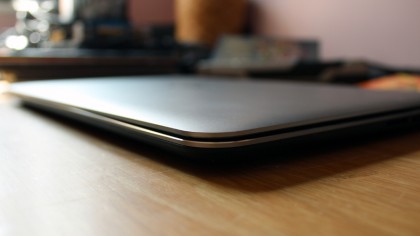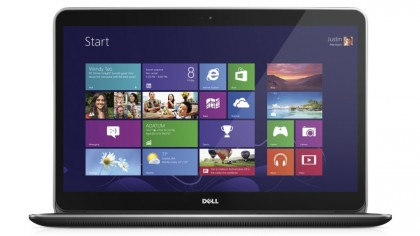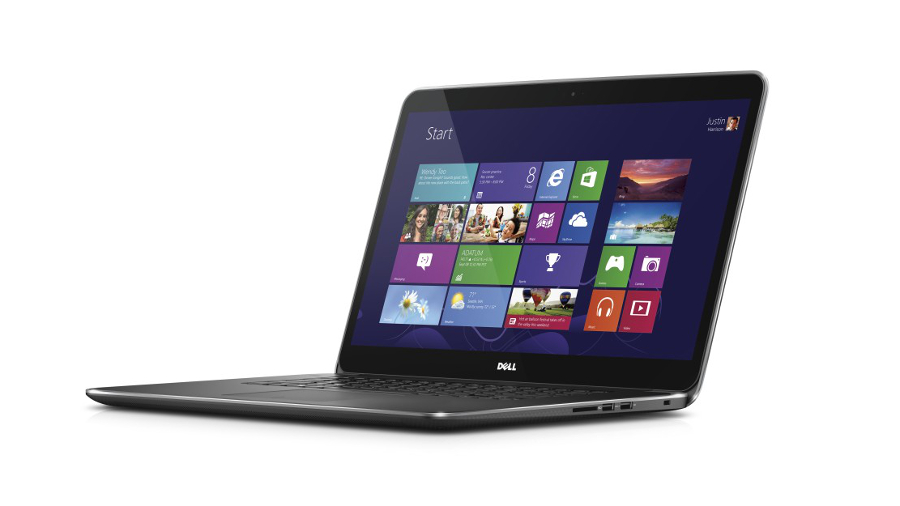Why you can trust TechRadar
Benchmarks
- PCMark 8 Home: 2571
- PCMark 8 Home battery life balanced 50% screen: 3 hrs 30 mins
- 3DMark: Cloud Gate: 10408; Sky Diver: 6866; Fire Strike: 2060
- Cinebench R15: CPU: 595cb; Graphics: 72.05fps
The lower-power Core i7 processor means the Dell can't quite keep up with its rivals for application power – its PCMark 8 Home result of 2,571 is good, but the Toshiba Satellite P50t B-11D's result of 3,196 is just that little bit better. Expect similar pace from the Apple MacBook Pro 15-inch with Retina display, which has a 2.2GHz Core i7 chip inside.

It's a similar story in Cinebench, where the Dell's 595cb result was narrowly beaten by the Toshiba. Don't expect the XPS to break any speed records, then, but don't doubt its power either – there's enough grunt here to handle the vast majority of work tasks and consumer apps.
The XPS picked up the pace in our graphics tests. Its GTX 750M scored 6,866 in the 3DMark Fire Strike test, which is much better than the 1,620 result of the Toshiba. It's comparable performance to the MacBook, which has Intel's high-end Iris Pro integrated GPU, and it's enough to ensure that most games will run smoothly as long as there's some compromise on quality settings – and as long as you play at 1080p rather than the mighty 4K native resolution.
Battery life, though, is middling. The Dell lasted three hours and thirty minutes in the PCMark 8 test, which is almost an hour better than the Toshiba – but a long way behind the MacBook's six hour lifespan.
There's no denying the fact that Dell has squeezed powerful components inside a slimline chassis, which means that there's a little fan noise when those components are pushed hard. The high-pitched whine is easy to drown out with headphones, or with the Dell's crisp, well-balanced speakers, but it's obvious in a quiet room.

Screen
The Dell's 15.6-inch touchscreen has a glossy finish and a mighty 3,840 x 2,160 resolution. That means photos and text are pin-sharp, although it also means that Windows' scaling options have to be used to make text and icons legible. That's fine, as the in-built options work well, but some third-party tools can't cope, with pixellated or blurred page furniture or text that just doesn't scale at all.
For the most part, though, the Dell's 4K screen is stunningly sharp and perfectly usable – and quality is top-notch, too. The Dell's brightness level of 328cd/m2 is ample for indoors and has enough punch to pierce through bright sunlight, and it's bolstered by a black point of 0.21cd/m2. That's one of the lowest figures we've seen from a laptop, and it means that black shades will be impressively inky.
Those two figures combine for a top-notch contrast ratio of 1,171:1. That helps the screen display a broad range of colours with consistent depth and vibrancy.
The XPS 15's panel can display a decent 92% of the sRGB colour gamut, and those colours are displayed using an average Delta E of 1.66 – an excellent score that guarantees accuracy. The only fly in this particular ointment is the colour temperature, which sits at 7,234K – a little too cool.
That last issue won't affect most people, though; you'll only notice the lack of warmth to some tones if you're doing demanding colour work. For most tasks the Dell's screen is more than good enough – it has enough contrast to make games, movies and TV pop, and with the resolution to allow for Full HD movies and multiple windows to run with ease.
This is one of the best screens that's currently available on a Windows laptop thanks to its keen resolution and high quality – and with a density of 282ppi, it's sharper than the 221ppi MacBook Pro, too.
Mike has worked as a technology journalist for more than a decade and has written for most of the UK’s big technology titles alongside numerous global outlets. He loves PCs, laptops and any new hardware, and covers everything from the latest business trends to high-end gaming gear.
